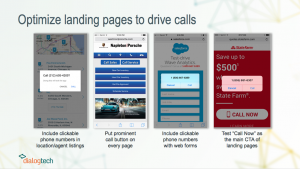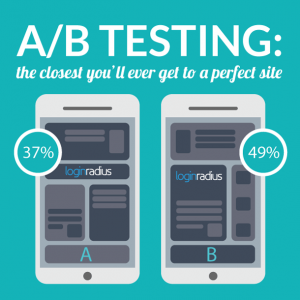Like many busy moms of young kids, Sylvia Suarez never thought too much about college for her two boys, much less saving for it. College simply seemed a long way off.
Until this school year. Under a pilot program at Tahoe Elementary School in Sacramento, Suarez got the motivation – and free cash – to get started. “It was a wakeup … that we need to save for them to go to college,” said Suarez, whose sons are 6 and 11.
She is one of 82 parents or guardians participating in a small but growing “Kids to College” savings program created by SAFE Credit Union and Sacramento City Councilman Kevin McCarty.
Launched in the 2011-12 school year, it’s a simple concept: Parents who take two one-hour financial literacy classes can receive up to $200 – free – in a college savings account for their kindergartner. The accounts are theirs to keep – and hopefully add to – until the child turns 18, when they can be used for college expenses.
“A lot of these families don’t have college savings. They don’t have a ton of financial information at their disposal. … This is a fabulous bridge to bring those together,” said McCarty, who patterned the “K2C” program after similar programs in the Bay Area and other cities.
College savings accounts for kids aren’t a new concept. Other countries, like Singapore and South Korea, have endorsed or launched so-called universal children’s savings accounts, some set up at birth or when kids reach school age. In the U.S., Congress has explored the idea of universal $500 accounts for newborns, but it has never made it into law. In 2007, state Senate President Pro Tem Darrell Steinberg, D-Sacramento, introduced legislation to create a similar program of $500 savings accounts for every California newborn, but it never got out of policy committee.
Of course, plenty of parents do their own saving-for-college accounts through state-sponsored 529 plans, Coverdell or other investments.
In Sacramento, the fledgling “K2C” program is now operating in five public elementary schools in McCarty’s City Council district: Elder Creek, Camellia Basic, Earl Warren, Mark Twain and Tahoe Elementary. It was inspired by a similar, but far more ambitious, K2C plan in San Francisco.
There, the city’s Office of Financial Empowerment runs what it calls the country’s first publicly funded, universal college savings plan. The $50 savings accounts are given to every kindergartener enrolled at more than 70 elementary schools in the San Francisco Unified School District.
In the nearly four years since the program started, the city has opened 13,693 of the $50 accounts. (Those qualifying for federal free-lunch programs receive an additional $50 in their accounts, plus there are matching contributions for a child’s first $100 deposit and for consistent savings.) All accounts are held at Citibank and cannot be accessed until high school graduation. If the money isn’t used for college by the time the child turns 25, it can be spent on other things.
“It’s still very early in the program, but we’re very encouraged by the high rate of savings among families, lower-income families in particular,” said Greg Kato, a spokesman with the San Francisco Treasurer’s Office. He said the city has invested $850,000 into the accounts, including some matching contributions for savers coming from nonprofit partners.
The program’s goals are multifold: encourage more children to pursue a college education, motivate more families to save for college, instill more financial literacy into the classroom curriculum and help reach the city’s “unbanked” population.
In Sacramento, McCarty’s program is more modest, with funding provided by SAFE, the Sacramento Community Region Foundation, the Nehemiah Foundation and private donations. A parent receives $75 for each of two classes, plus a $50 bonus if they complete both sessions.
The program is now in its third year. In that time, about 50 families have completed the required classes for their kids’ savings accounts, which are set up as California Uniform Transfer to Minors Accounts, or CUMTA. The accounts can be used for education purposes starting when the child reaches adulthood.
To qualify for the full $200, a parent or guardian must complete two one-hour sessions on budget basics and money management, including details on how to track income/expenses, set up a budget, access a free credit report, repair a tattered credit history and protect against identity theft.
“Some families have never budgeted. Some come from another country and have no credit history at all. … This gives them a starting point and empowers them to do this on their own,” said Shannon Heaps, financial literacy expert with SAFE Credit Union.
Each school chooses the class times that work best for their parents’ schedules: some are held before school at 8 a.m., some are after work; others during the lunch hour.
Heather Haight, a Tahoe Elementary mother, has two boys, ages 3 and 5. When her kindergarten son brought home a flier about the program, she figured it was worth a couple hours to sit in on the free money-management classes.
Haight, who works summers for a nonprofit, attended the required two sessions, which were held at her son’s school at 5 p.m. to accommodate working parents. Only a couple other parents showed up.
“It was surprising to me the class was so empty because it was free money,” said Haight, who earned $200 for her kindergartener’s account. Haight, whose husband is an engineer for a medical device company, said she learned some “really helpful information” on financial topics. “It’s a great program. I hope they keep offering it.”
McCarty, who has twin girls about to enter kindergarten this fall, said he and his wife started 529 savings plan accounts for their daughters before they were born. But for many families, he says, that’s not financially feasible.
“This is a community-changing effort to get people to really think about long-term savings, saving for the future. … Starting in kindergarten, college seems so far away. But if you start saving early, it can really make a difference.”
For Suarez, a stay-at-home mom whose husband is a UPS truck driver, the class has been empowering. “I’m doing this for my kids – and for me,” said Suarez, who teaches Zumba lessons for extra income. After her earning a $200 free account for her 6-year-old kindergartner, Gabriel, she opened two additional savings accounts – one for her family and a separate college account for her older son, 11-year-old Christian, who starts sixth grade in September.
Using the budgeting tips she learned in the financial literacy classes, Suarez said she’s managed to set aside $200 a month for each of her boys’ college funds. “It’s motivating my kids to go on to (college). … And for me, I’ve learned so much really good information. I’m so proud of myself that I took this opportunity.”
Read more on Sacramento Bee
(416)
Report Post






